|
|
|
|||||||||||
|
Inner Mongolia Autonomous Region |
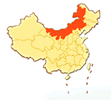 Inner
Mongolia Autonomous Region Called "Inner Mongolia" for short,
the region is situated on the northern frontier of China, bordered by Mongolia
and Russia on the north. It covers 1.1 million square km, with a population
of 23.79 million. Hohhot is the regional capital. Inner
Mongolia Autonomous Region Called "Inner Mongolia" for short,
the region is situated on the northern frontier of China, bordered by Mongolia
and Russia on the north. It covers 1.1 million square km, with a population
of 23.79 million. Hohhot is the regional capital.
|
|
Guangxi Zhuang Autonomous Region |
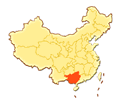 Guangxi
Zhuang Autonomous Region Called "Gui" for short, Guangxi is situated
in the west of south China, faces Beibu Gulf on the south and adjoins Viet
Nam on the southwest. It covers 230,000 square km, with a population of
48.22 million, of whom 13.65 million live in urban areas. Nanning is the
regional capital. Guangxi
Zhuang Autonomous Region Called "Gui" for short, Guangxi is situated
in the west of south China, faces Beibu Gulf on the south and adjoins Viet
Nam on the southwest. It covers 230,000 square km, with a population of
48.22 million, of whom 13.65 million live in urban areas. Nanning is the
regional capital.
|
|
Tibet Autonomous Region |
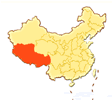 Tibet
Autonomous Region Called "Zang" for short, Tibet is situated on
the Qinghai-Tibet Plateau on the southwestern border of China, adjacent
to India, Nepal, Sikkim, Bhutan, and Myanmar. It covers 1.2 million square
km, with a population of 2.63 million. Lhasa is the regional capital. Tibet
Autonomous Region Called "Zang" for short, Tibet is situated on
the Qinghai-Tibet Plateau on the southwestern border of China, adjacent
to India, Nepal, Sikkim, Bhutan, and Myanmar. It covers 1.2 million square
km, with a population of 2.63 million. Lhasa is the regional capital.
|
|
Ningxia Hui Autonomous Region |
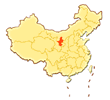 Ningxia
Hui Autonomous Region Called "Ning" for short, Ningxia is situated
on the middle reaches of the Yellow River in the northwest of China. It
covers 66,000 square km, with a population of about 5.72 million. Yinchuan
is the regional capital. Ningxia
Hui Autonomous Region Called "Ning" for short, Ningxia is situated
on the middle reaches of the Yellow River in the northwest of China. It
covers 66,000 square km, with a population of about 5.72 million. Yinchuan
is the regional capital.
|
|
Xinjiang Uygur Autonomous Region |
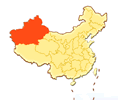 Xinjiang
Uygur Autonomous Region Called "Xin" for short, Xinjiang is situated
on the northwestern border of China, adjacent to Mongolia, Russia, Kazakhstan,
Kyrgyzstan, Tajikistan, Afghanistan, Pakistan and India. Covering an area
of 1.6 million square km, Xinjiang is the largest of all Chinese provinces
and autonomous regions, with a population of over 19.05 million. Urumqi
is the regional capital. Xinjiang
Uygur Autonomous Region Called "Xin" for short, Xinjiang is situated
on the northwestern border of China, adjacent to Mongolia, Russia, Kazakhstan,
Kyrgyzstan, Tajikistan, Afghanistan, Pakistan and India. Covering an area
of 1.6 million square km, Xinjiang is the largest of all Chinese provinces
and autonomous regions, with a population of over 19.05 million. Urumqi
is the regional capital.
|